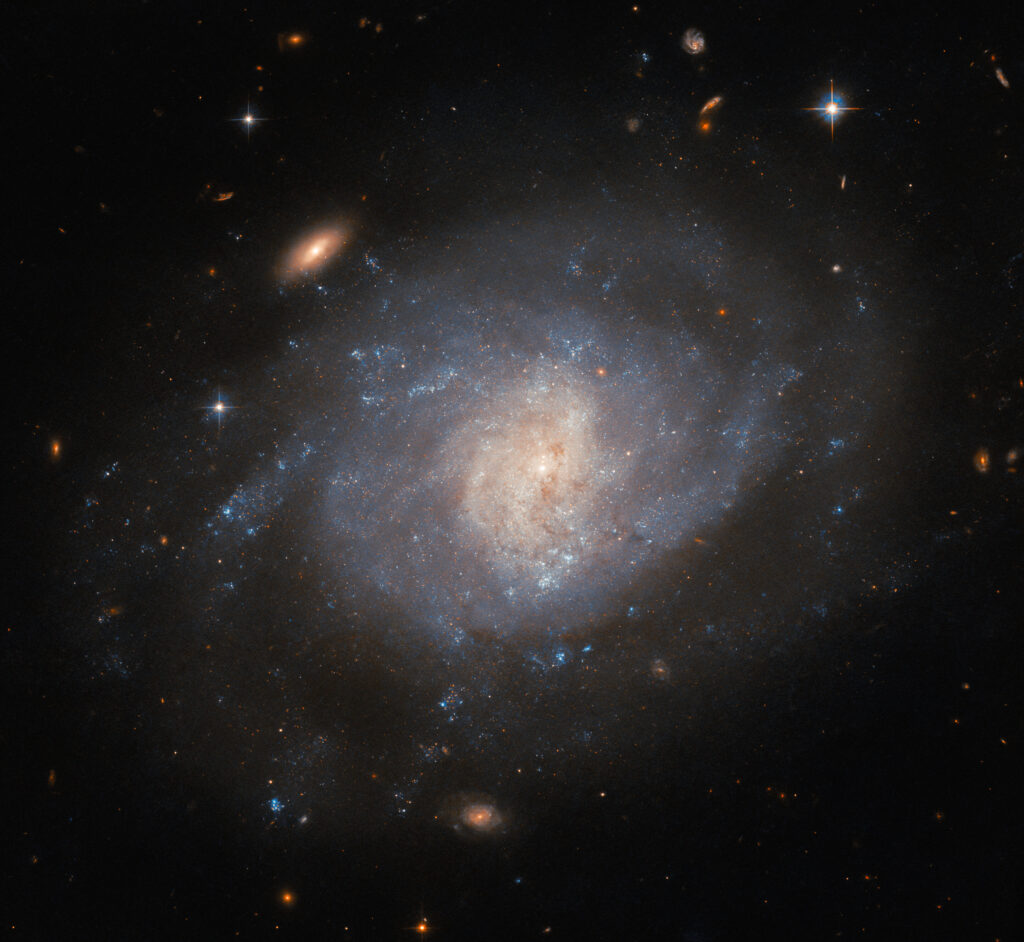The Hubble Mission Team released a new image. It captures the galaxy NGC 941.

NGC 941 is located at a distance of 55 million light-years from Earth in the direction of the constellation Triangulum. It is classified as a spiral galaxy. In the Hubble photo, you can see its arms, which merge into a vortex disk surrounded by a dim halo. The core of the galaxy glows a brighter color and has patches of dark dust.
The NGC 941 image was taken by Hubble because of an event that happened a few years ago. We are talking about an exploding supernova, designated SN 2005ad. Observations of the site of its explosion were carried out within the framework of a project aimed at studying Type II supernovae resulting from the collapse of giant stars.
Although the study was carried out by professional astronomers, SN 2005ad owed its discovery to the outstanding amateur astronomer Koichi Itagaki, who discovered more than 170 supernovae. In this regard, the question may arise as to how an amateur astronomer can notice something like this before professional scientists who have access to such telescopes as Hubble. Part of the answer is that supernova detection is a mixture of skill, opportunity, and luck. Their flares occur unusually quickly: they suddenly appear, then become brighter and dimmer for several days or weeks.
Another aspect is that professional astronomers often do not devote much time to actual observations. There is a lot of competition for time on telescopes like Hubble, and then it can take weeks, months, and sometimes years to process and analyze the data obtained over several hours of observations. Amateur astronomers can spend much more time observing the sky and sometimes have extremely impressive systems of telescopes, computers and software.
Skilled amateurs like Itagaki notice so many supernovae that there is a whole online system of messages about them (Transient Name Server). It is a great help for professional astronomers because, in the case of supernovae, time really plays a crucial role. After the announcement of the discovery of SN 2005ab, scientists could conduct spectroscopic studies and confirm it as a Type II supernova. As a result, this made it possible to include it in the list of targets for Hubble observation.
According to https://esahubble.org
Follow us on Twitter to get the most interesting space news in time
https://twitter.com/ust_magazine
